
314 S Gillette Ave, Gillette, WY 82716
Phone Number: 307-686-0040
Monday through Friday: 8 am – 4:30 pm
As America’s first national monument, you’ve likely heard of Devils Tower, a renowned attraction near Gillette, Wyoming that draws outdoor lovers and sightseers from all over. But have you ever thought to yourself, “Why is it shaped the way it is?” or “Why is it called Devils Tower?” There is, in fact, much history, intrigue, and cultural significance attached to this site. If your curiosity is piqued, buckle up and get ready to dive into the Devils Tower story.
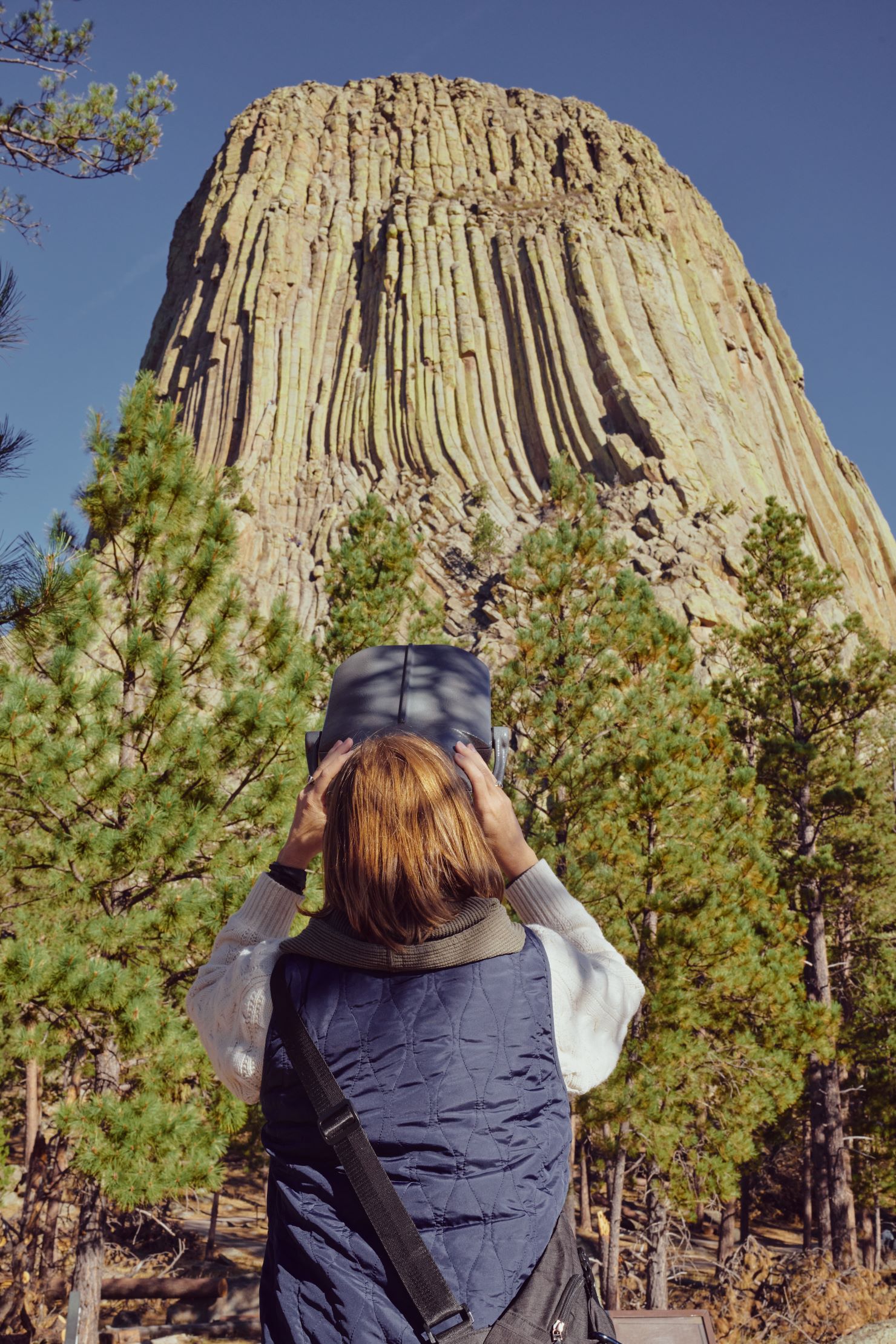
The Devils Tower is more than just a striking geological marvel—it’s a landmark steeped in history and deeply rooted in Native American culture. Step back in time to discover how the Tower got its name and its unique stories.
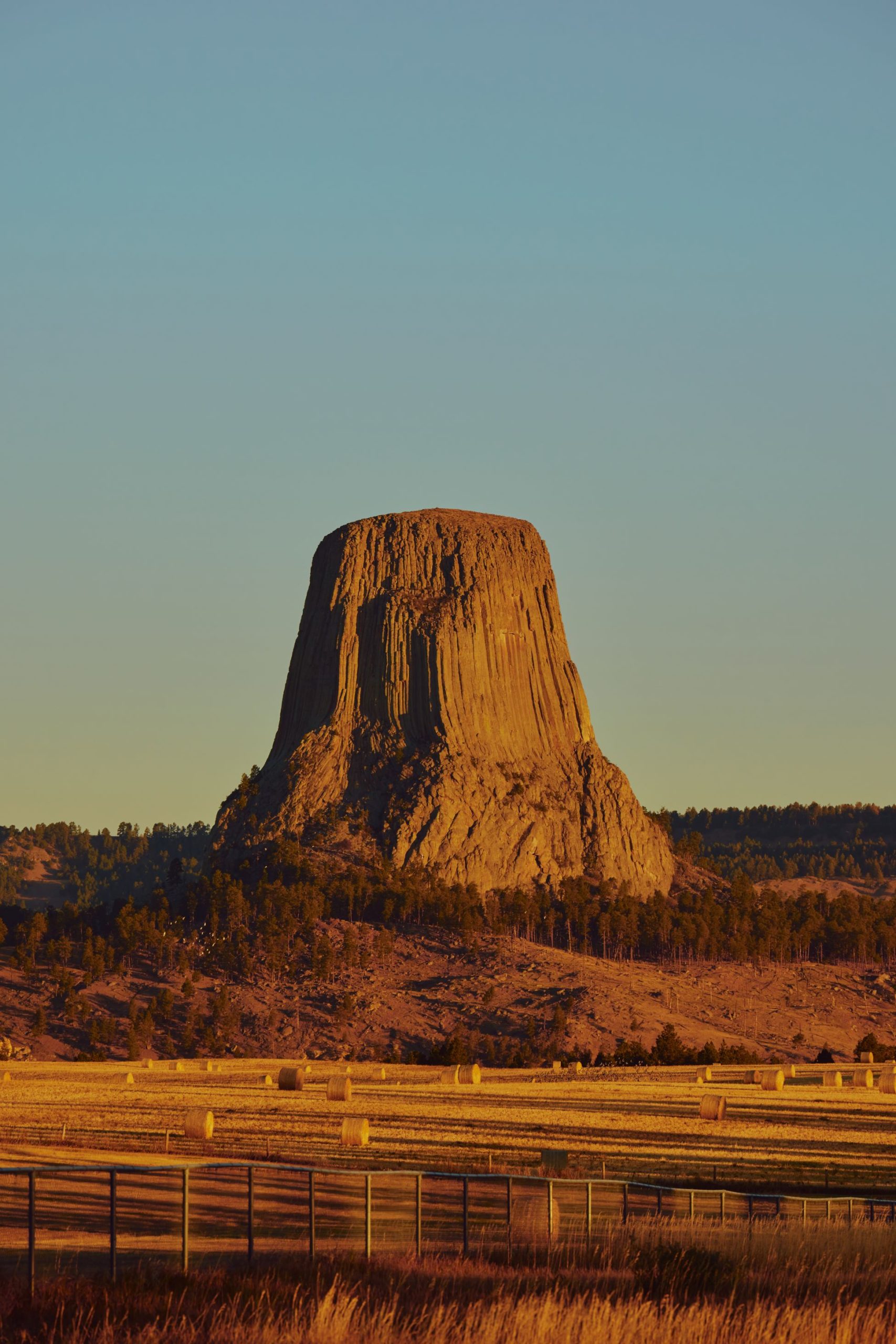
The first recorded use of the name “Devils Tower” was by Lieutenant Colonel Richard Dodge. In 1875, he led a military escort for a scientific expedition into the Black Hills. During the expedition, Dodge kept a journal in which he noted, “the Indians call this place ‘bad god’s tower,’ a name adopted with proper modification. Thus, “Devils Tower” was born.
Interestingly, there are no records indicating that Native Americans associated this place with bad gods or evil spirits. One theory suggests that an inaccurate translation led Dodge’s men to confuse the word bear with bad god. Another theory proposes that Dodge deliberately changed the name of a sacred Indigenous site. While both theories have some merit, it’s worth noting that mistranslations were common then in U.S. government relations with American Indians at the time.

For roughly 10,000 years, various American Indian tribes have called this region home. Groups like the Crow, Kiowa, Shoshone, Arapahoe, Cheyenne, and Lakota controlled the Black Hills or surrounding areas at different times throughout their histories. Each of these tribes has its own name for the Tower, and many of those names have similar English translations. To this day, several oral histories about the Tower’s origins have been recorded. A common thread runs through many of these narratives—the large grooves for which the Tower is so famous were scratched by a bear or group of bears. Thus, many Indigenous names translate to Bear Lodge, Bear Home, or Bear Tipi.
For many tribes, the Tower is a place of deep spiritual reverence. The Lakota, for instance, refer to it as “Mato Tipila,” meaning Bear Lodge, reflecting their belief that it is sacred ground. The Kiowa hold the Tower as a powerful symbol in their oral traditions, representing a place of great transformation and protection. Overall, Indigenous tribes view the Tower as a site of profound cultural and spiritual importance, honoring its role in tribal practices, ceremonies, and oral histories to this day.
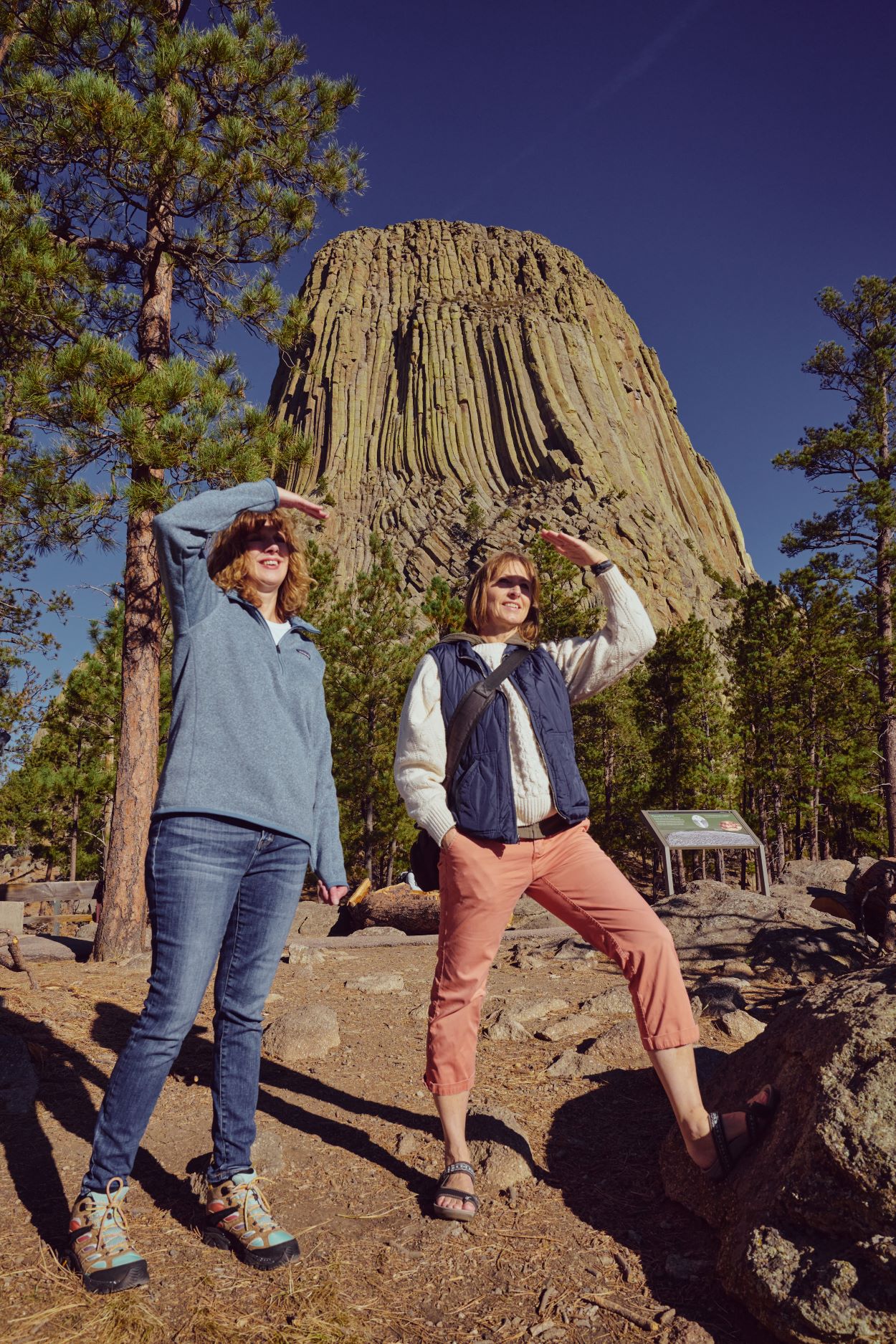
Each tribe’s unique story and name for the Tower highlights its deep cultural significance. One such story from the Crow Tribe illustrates the power and protection associated with Devils Tower. There was once a group of Crow Tribe members camped at a place called “Bear’s House,” where two little girls were playing around some large rocks. Many bears lived nearby, and one big bear, spotting the girls alone, decided to try to eat them. Just as the bear was about to catch them, the girls noticed him. They scrambled to get away and climbed on top of the rocks they had been playing around, but they were still within the bear’s reach.
Seeing that the girls were in danger, the Great Spirit caused the rock to rise up out of the ground. The bear tried over and over again to jump to the top, but each time, he only scratched the rock and fell back down. The rock grew taller until it was so high that the bear could no longer reach the girls. It is said that the girls remain there to this day.
Care to learn more about the sacred narratives regarding the Devils Tower Story? Take a look at these oral histories from the Arapahoe, Cheyenne, Kiowa, and Lakota tribes.
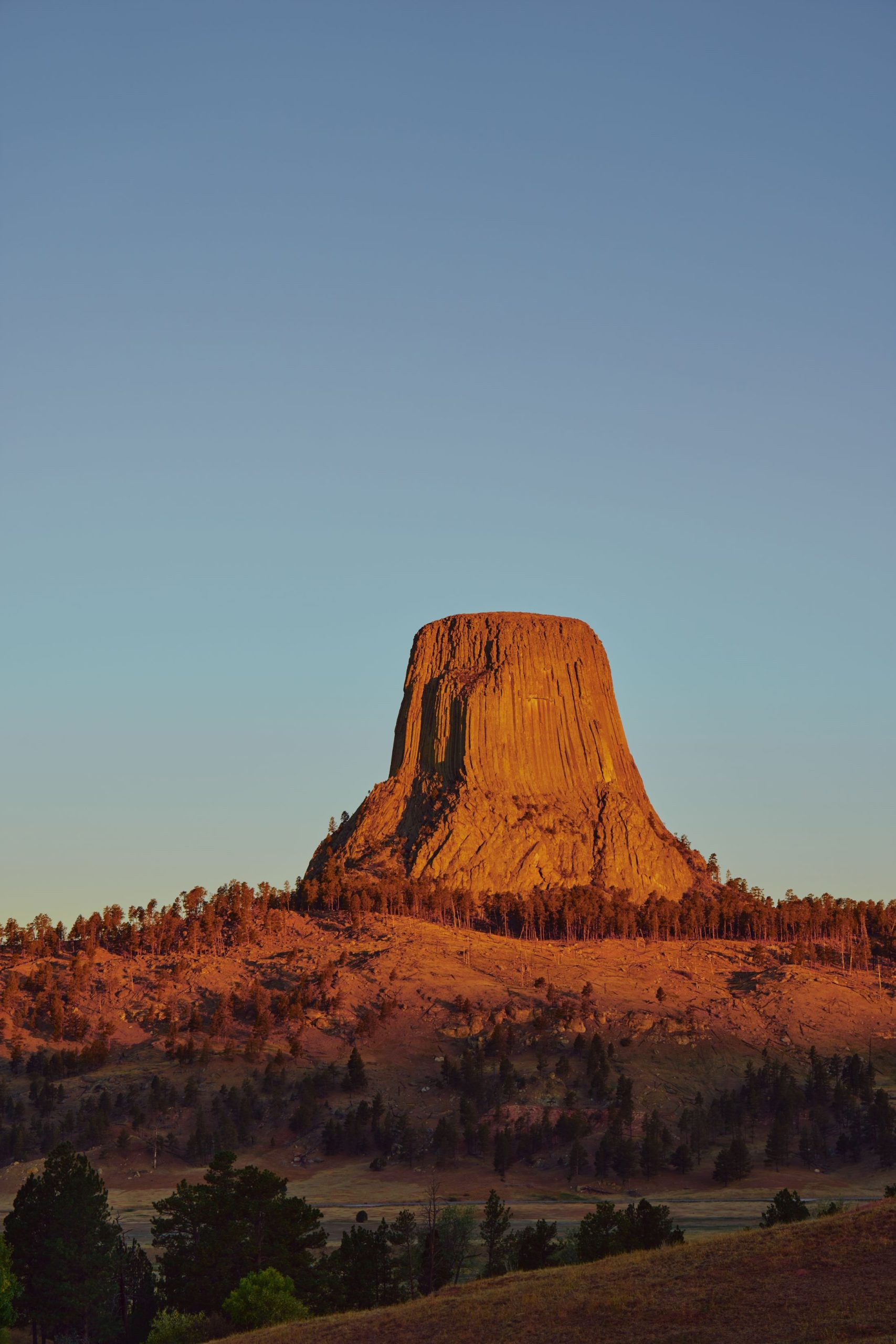
Geologists have studied this magnificent monument since the late 1800s and developed several theories, yet its formation has remained a mystery. Each of the theories regarding Devils Tower is unique, but none of them have been universally accepted; thus, the real beginning of this geological marvel is still unknown.
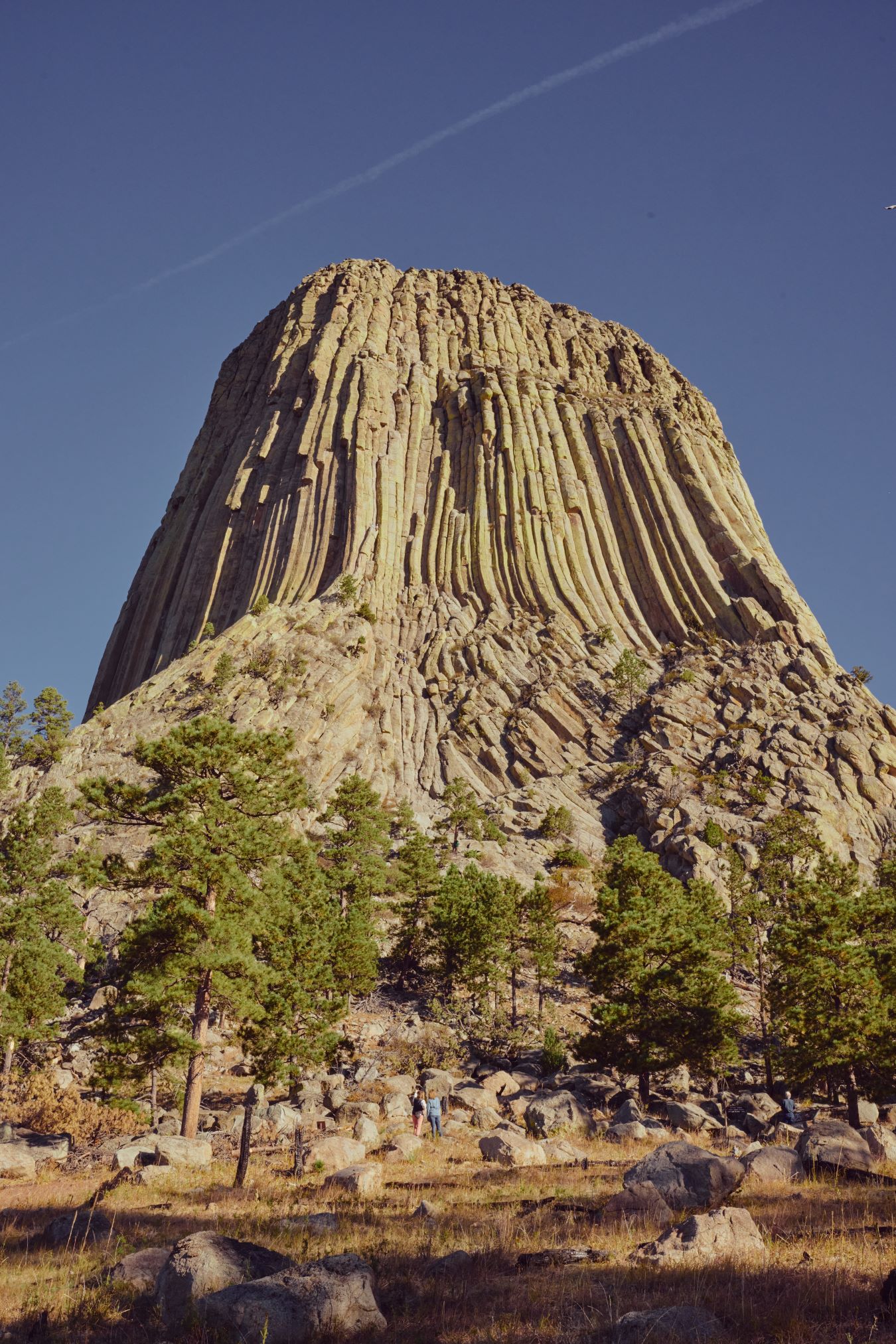
Although many people believe that it is a petrified tree stump, this is thought to be a myth by many. Actually, Devils Tower is composed of a rare type of igneous rock called phonolite porphyry and is the world’s largest example of columnar jointing, a pattern that only develops in igneous rocks.
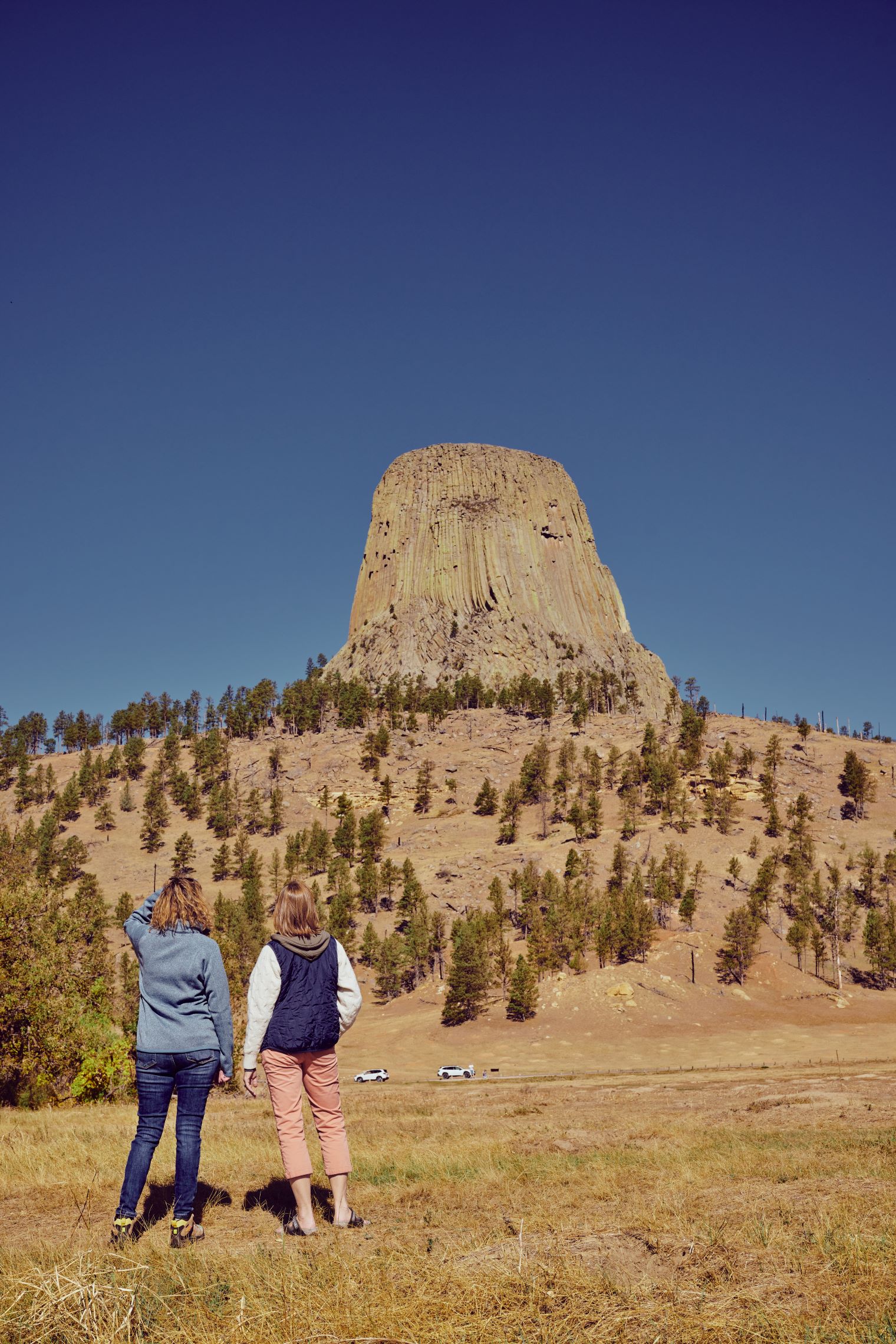
Geologists agree that the Tower originated as magma buried beneath the Earth’s surface. However, they continue to debate how the magma cooled to create the Tower’s iconic structure and its relationship to the surrounding geology. Here are just a few theories that have risen throughout history.
One of the simplest explanations is that Devils Tower is a stock—a small, intrusive body of magma that cooled underground and was later exposed by erosion.
Another Devils Tower theory proposes that the monument is actually a volcanic plug or the neck of an extinct volcano. However, there is limited evidence of volcanic activity in the area—such as volcanic ash, debris, or lava flows—casting doubt on this idea.
In 1907, scientists Nelson Horatio Darton and C. C. O’Hara suggested that Devils Tower was the eroded remnant of a laccolith—a mushroom-shaped mass of igneous rock formed when magma intrudes between sedimentary layers without reaching the surface.
Want to keep geeking out on geological history? Explore more of the fascinating insights surrounding Devils Tower.
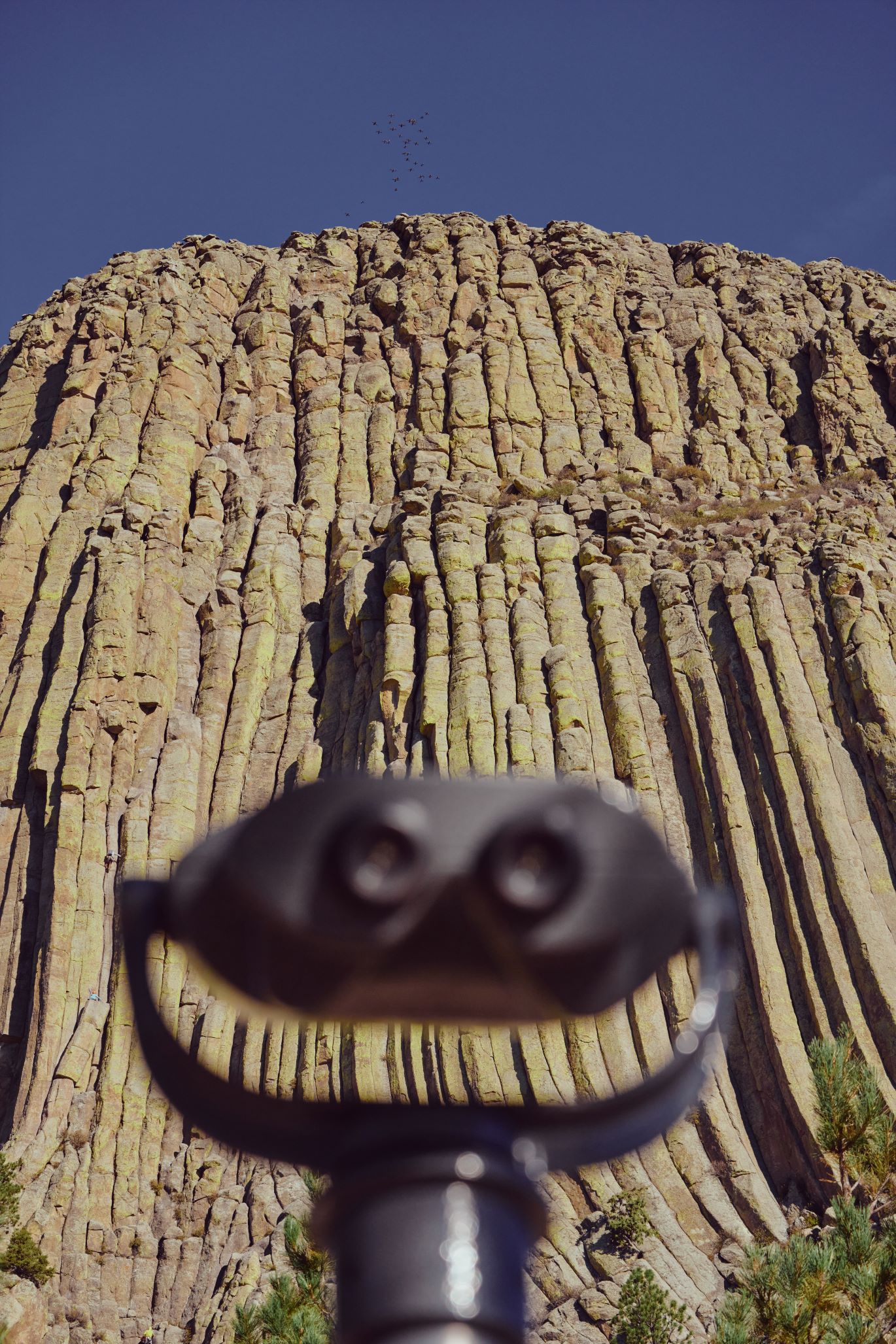
Now that you’ve explored the past of Devils Tower, let’s shift our focus to the present and dive into how it actively shapes Native American traditions and influences modern pop culture.
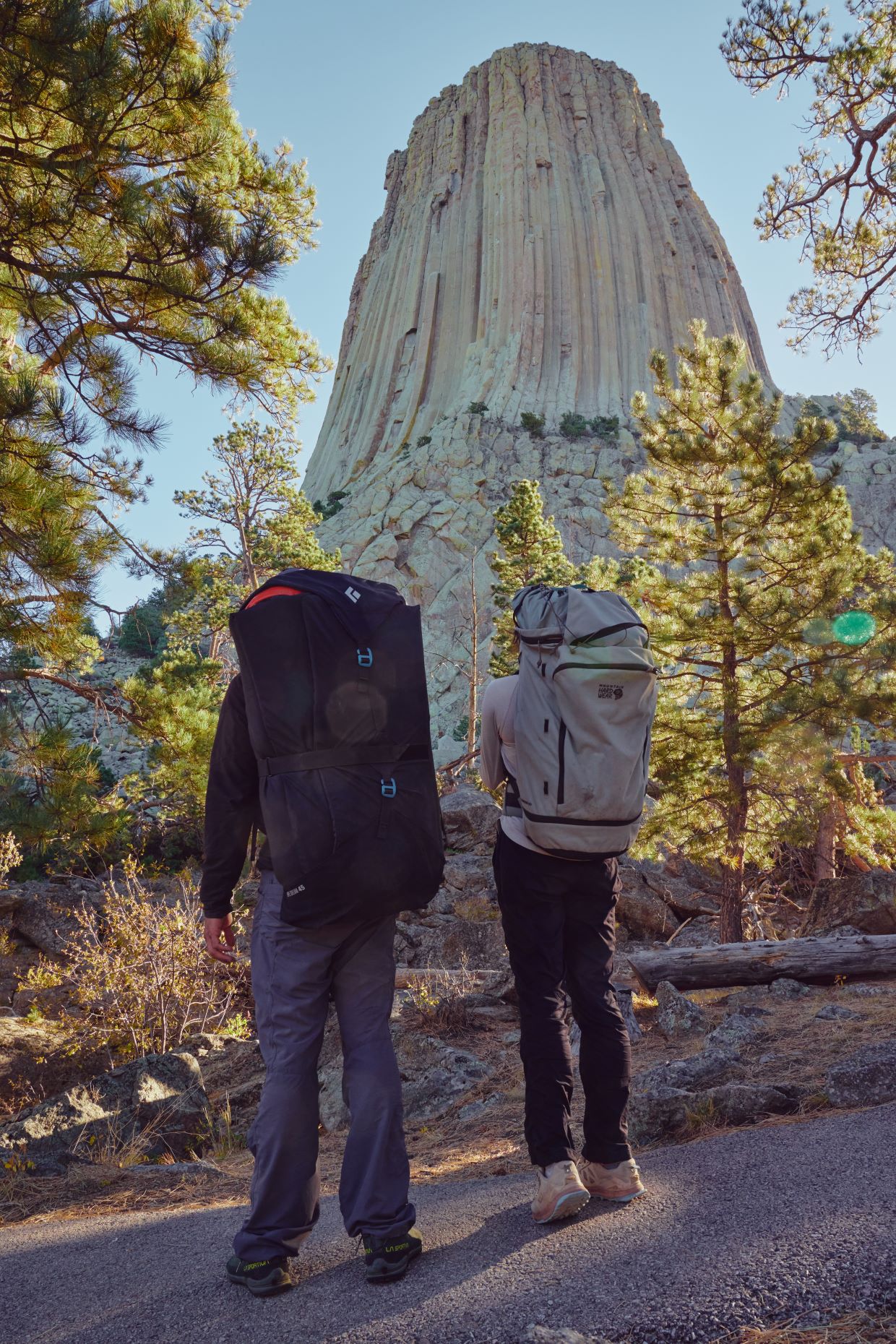
Today, personal and group ceremonies like sweat lodges and sun dances continue to be practiced at the monument. The most common ritual, however, is the offering of prayer bundles or colorful cloths, which symbolize an individual’s personal connection to the Tower. These offerings are placed to make a request, honor a memory, or seek guidance.
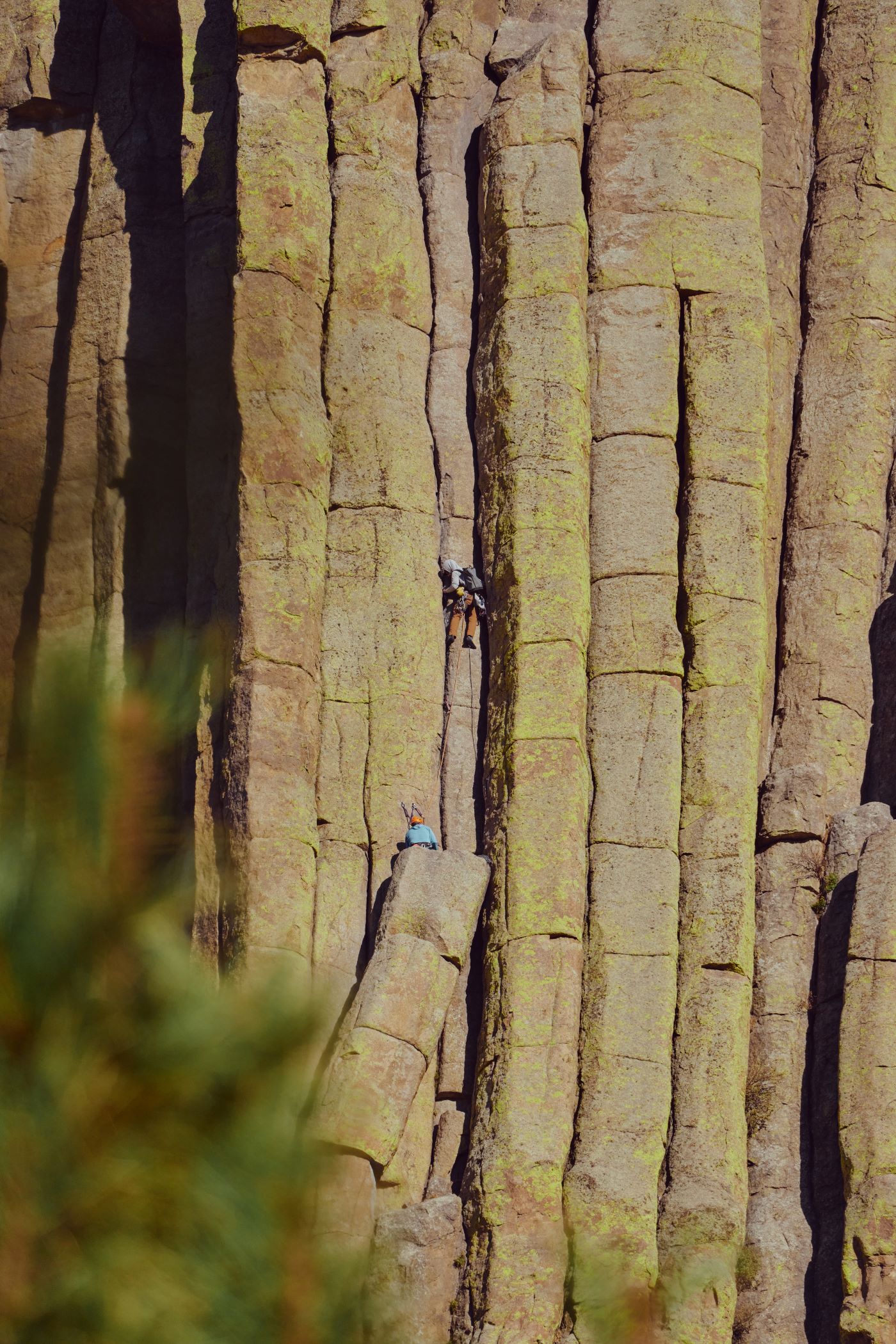
Devils Tower has also made notable appearances in movies and pop culture, most famously in the 1977 Spielberg film, “Close Encounters of the Third Kind,” where it serves as a dramatic meeting place for human and extraterrestrial contact. The 2019 Monsterverse film, “Godzilla: King of the Monsters,” also featured the Tower as the dwelling place of a Titan named Abaddon. Additionally, Devils Tower has been referenced in many novels, paintings, and even video games. Its distinctive structure and imposing form often evoke themes of mystery and resilience, making it a compelling backdrop in various art forms.
Now that you’ve gained some insight into this beloved national monument, it’s time to experience it for yourself! Create your own Devils Tower story by embarking on an unforgettable adventure packed with hiking, biking, rock climbing, and more exploration.
Make the most of your trip by exploring the many things to do nearby, from scenic drives to local attractions and events. Discover even more Western fun by checking out what’s new on the events page.

314 S Gillette Ave, Gillette, WY 82716
Phone Number: 307-686-0040
Monday through Friday: 8 am – 4:30 pm
Use the link below or navigate to our contact page to order a copy of our visitors guide!